618 results
5 - North Africa, Islam and the Great Civilisation
- from Part II - Forming an Africa Policy (1971–1975)
-
- Book:
- Pahlavi Iran's Relations with Africa
- Print publication:
- 27 June 2024, pp 119-149
-
- Chapter
- Export citation
Chapter 7 - Religion
- from Part I - Life and Times
-
-
- Book:
- Goethe in Context
- Published online:
- 16 May 2024
- Print publication:
- 23 May 2024, pp 66-74
-
- Chapter
- Export citation
Chapter 28 - Iran
- from Part V - World Cultures Inspiration and Reception
-
-
- Book:
- Goethe in Context
- Published online:
- 16 May 2024
- Print publication:
- 23 May 2024, pp 272-281
-
- Chapter
- Export citation
Antinomianism as a way to God in nineteenth-century Java: the Suluk Lonthang between Islamic and pre-Islamic religious discourse
-
- Journal:
- Journal of the Royal Asiatic Society , First View
- Published online by Cambridge University Press:
- 20 May 2024, pp. 1-25
-
- Article
-
- You have access
- HTML
- Export citation
Chapter 5 - American Spirituality
-
-
- Book:
- The Cambridge Companion to American Utopian Literature and Culture since 1945
- Published online:
- 09 May 2024
- Print publication:
- 16 May 2024, pp 100-114
-
- Chapter
- Export citation
14 - Sexuality in Islamic Traditions
-
-
- Book:
- The Cambridge World History of Sexualities
- Published online:
- 26 April 2024
- Print publication:
- 16 May 2024, pp 293-313
-
- Chapter
- Export citation
10 - Sex in Sixteenth-Century Istanbul
-
-
- Book:
- The Cambridge World History of Sexualities
- Published online:
- 26 April 2024
- Print publication:
- 16 May 2024, pp 191-209
-
- Chapter
- Export citation
3 - A Question of Jurisprudence
-
- Book:
- How Islam Rules in Iran
- Published online:
- 02 May 2024
- Print publication:
- 09 May 2024, pp 58-104
-
- Chapter
- Export citation
9 - Whither the Islamic Republic?
-
- Book:
- How Islam Rules in Iran
- Published online:
- 02 May 2024
- Print publication:
- 09 May 2024, pp 297-304
-
- Chapter
- Export citation
1 - Introduction
-
- Book:
- How Islam Rules in Iran
- Published online:
- 02 May 2024
- Print publication:
- 09 May 2024, pp 1-10
-
- Chapter
-
- You have access
- HTML
- Export citation
6 - Theorizing Islamic Democracy
-
- Book:
- How Islam Rules in Iran
- Published online:
- 02 May 2024
- Print publication:
- 09 May 2024, pp 202-237
-
- Chapter
- Export citation
8 - Perfect Strangers: Australia and West Asia
- from Part 2 - Relationships
-
-
- Book:
- Australia in World Affairs 2001–2005
- Published online:
- 04 May 2024, pp 128-144
-
- Chapter
- Export citation
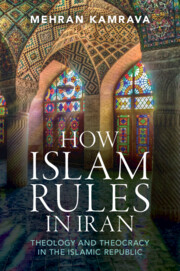
How Islam Rules in Iran
- Theology and Theocracy in the Islamic Republic
-
- Published online:
- 02 May 2024
- Print publication:
- 09 May 2024
The unreality of traditional Islamic theism's views on belief, providence, and eschatology: a rejoinder to Tabur
-
- Journal:
- Religious Studies , First View
- Published online by Cambridge University Press:
- 22 April 2024, pp. 1-21
-
- Article
-
- You have access
- Open access
- HTML
- Export citation
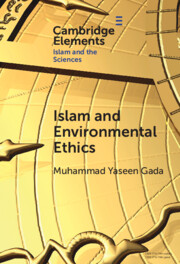
Islam and Environmental Ethics
-
- Published online:
- 13 April 2024
- Print publication:
- 09 May 2024
-
- Element
- Export citation
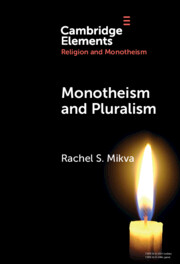
Monotheism and Pluralism
-
- Published online:
- 23 March 2024
- Print publication:
- 04 April 2024
-
- Element
- Export citation
“Moderate” vs “Extremist” Muslims? How a decontextualized distinction can trigger a contradictory assessment of security and radicalization in Malaysia
-
- Journal:
- International Journal of Asian Studies , First View
- Published online by Cambridge University Press:
- 11 March 2024, pp. 1-22
-
- Article
-
- You have access
- Open access
- HTML
- Export citation
Chapter 6 - The Travel Book and Wounded Civilizations
-
- Book:
- V. S. Naipaul and World Literature
- Published online:
- 01 February 2024
- Print publication:
- 08 February 2024, pp 164-197
-
- Chapter
- Export citation
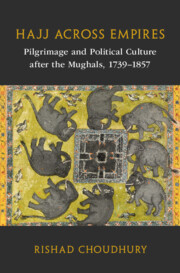
Hajj across Empires
- Pilgrimage and Political Culture after the Mughals, 1739–1857
-
- Published online:
- 01 February 2024
- Print publication:
- 08 February 2024
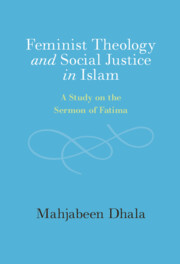
Feminist Theology and Social Justice in Islam
- A Study on the Sermon of Fatima
-
- Published online:
- 27 January 2024
- Print publication:
- 01 February 2024



